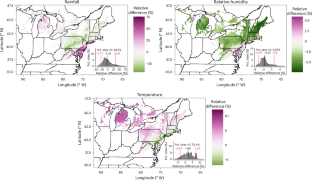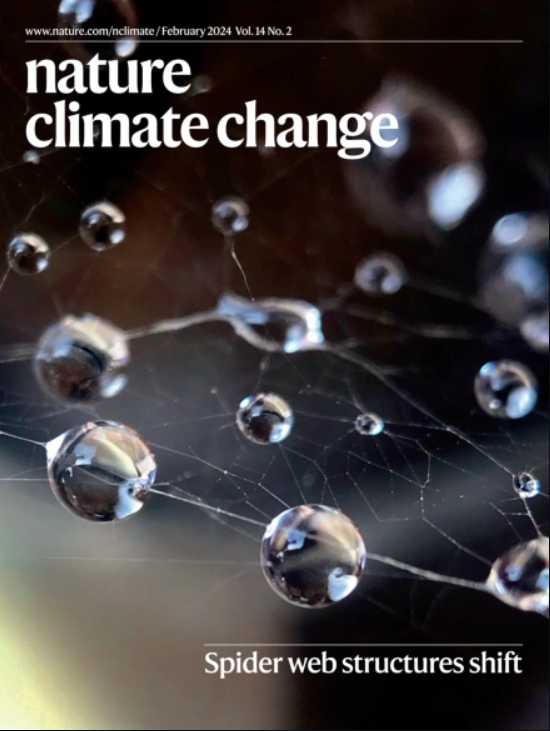气候变化导致入侵海绵蛾的生物防治减少
IF 29.6
1区 地球科学
Q1 ENVIRONMENTAL SCIENCES
引用次数: 0
摘要
气候变化对森林落叶昆虫的影响知之甚少,但可能严重降低森林生产力、生物多样性和木材产量。自1869年引入以来的几十年里,海绵蛾(Lymantria dispar)严重地破坏了北美森林的落叶,但1989年引入的真菌病原体Entomophaga maimaiga抑制了海绵蛾的落叶27年。然而,E. maimaiga需要凉爽、潮湿的环境,而气候变化正在给这种昆虫的生存范围带来炎热、干燥的环境。本文利用一个经实证验证的生态气候模型预测,气候变化将大幅降低麦穗棘球绦虫感染率,从而增加海绵蛾的落叶。最近落叶量的反弹与我们的预测一致。我们的工作表明,气候变化对物种相互作用的影响可能对自然生态系统产生重要影响。本文章由计算机程序翻译,如有差异,请以英文原文为准。


Climate change drives reduced biocontrol of the invasive spongy moth
The effects of climate change on forest-defoliating insects are poorly understood, but could severely reduce forest productivity, biodiversity and timber production. For decades following its introduction in 1869, the spongy moth (Lymantria dispar) severely defoliated North American forests, but the introduction of the fungal pathogen Entomophaga maimaiga in 1989 suppressed spongy moth defoliation for 27 years. E. maimaiga, however, needs cool, moist conditions, whereas climate change is bringing hot, dry conditions to the range of the insect. Here we use an empirically verified eco-climate model to project that climate change will sharply reduce E. maimaiga infection rates, thereby increasing spongy moth defoliation. Recent rebounds in defoliation are consistent with our projections. Our work demonstrates that the effects of climate change on species interactions can have important consequences for natural ecosystems. The authors constructed an eco-climate model to project climate change impacts on populations of the spongy moth (Lymantria dispar) and its pathogen Entomophaga maimaiga. They show that climate change will sharply reduce E. maimaiga infection rates and subsequently increase spongy moth defoliation.
求助全文
通过发布文献求助,成功后即可免费获取论文全文。
去求助
来源期刊

Nature Climate Change
ENVIRONMENTAL SCIENCES-METEOROLOGY & ATMOSPHERIC SCIENCES
CiteScore
40.30
自引率
1.60%
发文量
267
审稿时长
4-8 weeks
期刊介绍:
Nature Climate Change is dedicated to addressing the scientific challenge of understanding Earth's changing climate and its societal implications. As a monthly journal, it publishes significant and cutting-edge research on the nature, causes, and impacts of global climate change, as well as its implications for the economy, policy, and the world at large.
The journal publishes original research spanning the natural and social sciences, synthesizing interdisciplinary research to provide a comprehensive understanding of climate change. It upholds the high standards set by all Nature-branded journals, ensuring top-tier original research through a fair and rigorous review process, broad readership access, high standards of copy editing and production, rapid publication, and independence from academic societies and other vested interests.
Nature Climate Change serves as a platform for discussion among experts, publishing opinion, analysis, and review articles. It also features Research Highlights to highlight important developments in the field and original reporting from renowned science journalists in the form of feature articles.
Topics covered in the journal include adaptation, atmospheric science, ecology, economics, energy, impacts and vulnerability, mitigation, oceanography, policy, sociology, and sustainability, among others.
 求助内容:
求助内容: 应助结果提醒方式:
应助结果提醒方式:


